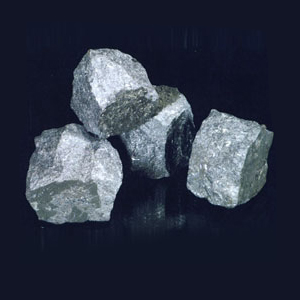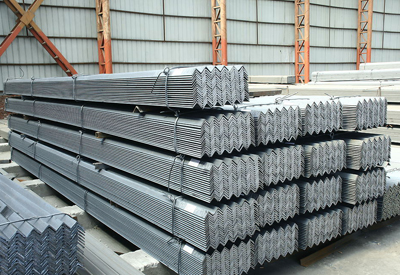[Ferro-Alloys.com] Australian Vanadium Limited (AVL) is a Perth-based company that explores for vanadium/titanium, uranium, nickel, copper, and other economic resources. The company operates through Upstream - Australian Vanadium Project; Midstream - Electrolyte Plant; and Downstream - Energy Storage segments. Vanadium is an important element due to its non-corrosive properties and wide uses, and the company aims to create shareholder value by supplying high-grade vanadium to the global steel and energy storage markets. However, the market for vanadium in Australia has proven volatile over the years. This article will explore the potential of investing in Australian Vanadium Limited, considering the company's projects, financial performance, and the broader vanadium market.
Australian Vanadium Limited's (AVL) share price
Australian Vanadium Limited (AVL) is a Perth-based company that engages in mineral exploration activities in Australia. It explores vanadium/titanium, uranium, nickel, copper, PGE, and other economic resources. The company operates through three segments: Upstream – Australian Vanadium Project; Midstream – Electrolyte Plant; and Downstream – Energy Storage.
As of 3 July 2025, AVL's share price was 0.01, with a previous close of 0.01. The stock trades on the Sydney Stock Exchange under the symbol "AVL." On 3 July 2025, the company's market cap was 77.71 million, and the EPS (TTM) was 0.00. The daily buy/sell signal was "Sell."
AVL's share price and overall business outlook are influenced by several factors. Firstly, vanadium is a critical element in battery storage technology, particularly in vanadium redox flow batteries (VFBs). VFBs offer long-duration energy storage with minimal degradation in performance over an asset life of more than 30 years. This technology is gaining traction globally, with China already driving a move towards VFB energy storage. Australia's National Battery Strategy also recognizes the importance of energy storage in the country's energy transition, creating opportunities for AVL.
Secondly, vanadium is classified as a critical mineral by several economies due to its non-corrosive properties and wide range of applications. The growing focus on decarbonization and the increasing demand for stronger, lighter steel in the aerospace industry contribute to the demand for vanadium. Additionally, the penetration of renewable energy generation is reducing the reliance on base load coal and gas power generation, which aligns with AVL's exposure to the vanadium value chain.
However, it is important to note that Australia's vanadium market has been volatile, and comprehensive analysis is required to determine if AVL is a good investment.
AVL's battery storage technology
Australian Vanadium Limited (AVL) is an ASX-listed company that engages in mineral exploration activities in Australia. The company explores vanadium/titanium, uranium, nickel, copper, PGE, and other economic resources. AVL's involvement in the battery sector is through its development and sales of vanadium flow batteries (VFBs).
VFBs are a proven technology that provides energy storage over a 4 to 12+ hour time frame, with minimal degradation in performance over an asset life of more than 30 years. Vanadium accounts for approximately 50% of the capex of a VFB. China is already driving a move towards VFB energy storage, with over 20GWh of VFB projects approved or under construction. By the end of 2025, VFBs are expected to account for 15-20% of China's installed battery storage capacity.
In Australia, the National Battery Strategy, announced by the Federal Government, recognizes the critical importance of energy storage to Australia's energy transition. The strategy highlights that over 43GW of energy storage will be required in the Australian grid by 2040, and VFBs can significantly contribute to that capacity. The National Battery Strategy also provides access to funding to help accelerate the rollout of battery storage, which AVL is actively pursuing.
The growing penetration of renewable energy generation is reducing the historic reliance on base load coal and gas power generation during daylight hours. As the global energy transition towards decarbonisation and electrification accelerates, AVL is in a unique position to generate significant shareholder value through its exposure to the vanadium value chain. Vanadium has been classified as a critical mineral by several economies, with increasing demand from the aerospace industry and the steel industry, where it is used to create stronger, lighter steel.
AVL's vanadium redox flow batteries
Vanadium is an important element due to its non-corrosive properties and wide range of uses. However, it is rarely found in nature due to its unstable state, making it rarer than many other industrial metals. Vanadium redox flow batteries (VRFBs) are rechargeable batteries that use vanadium ions as charge carriers. They are well-suited for grid energy storage and have a lifespan of 20+ years. They can also be discharged 100% without damage and are non-flammable.
AVL's vanadium flow batteries (VFBs) are a proven technology that provides energy storage over a 4 to 12+ hour time frame, with minimal degradation in performance over an asset life of more than 30 years. They are well-suited for grid connection or off-grid settings, making them ideal for renewable energy sources. Additionally, the vanadium electrolyte can be reused and does not need to be disposed of, and the batteries can be cycled more than once per day.
AVL is actively pursuing strategies to access funding from the National Battery Strategy, which aims to accelerate the rollout of battery storage in Australia. With the growing penetration of renewable energy generation and the transition towards decarbonisation and electrification, AVL is in a unique position to generate significant shareholder value through its involvement in the vanadium value chain.
Vanadium's rarity and industrial uses
Vanadium is a naturally occurring element composed of one stable isotope, 51V, and one radioactive isotope, 50V. It is a hard, silvery-grey, malleable transition metal with a moderate specific gravity (6.0) and a relatively high melting point (1710° C). It is often embedded within compounds such as vanadinite, carnotite, patronite, and phosphate, as well as some iron ores and crude oils. Vanadium is present in around 60-65 different minerals that naturally occur in trace amounts in some rock formations on every continent. Its abundance in the earth's crust is comparable to that of copper, nickel, and zinc. However, despite its abundance, it is one of the most expensive elements to recover due to the difficulty in isolating it from other elements.
Vanadium has a wide range of industrial uses due to its non-corrosive properties and strength. One of its primary applications is to strengthen steel alloys, particularly for car chassis, high-rise buildings, bridges, pipelines, and other heavy industrial equipment. Vanadium steel allows for reduced weight while increasing tensile strength. It is also used in medical devices, railway tracks, turbine engines, and aerospace applications. Vanadium compounds are also used extensively as catalysts in the production of sulfuric acid and other chemicals.
In recent years, vanadium has gained importance in the energy sector due to its role in battery storage technology. Vanadium flow batteries (VFBs) have superior durability and longer working lives compared to other types of batteries. They are a proven technology for energy storage over a 4 to 12-hour timeframe, with minimal degradation in performance over an asset life of more than 30 years. China is already driving the adoption of VFB energy storage, and Australia has also recognized the importance of VFBs in its National Battery Strategy.
Vanadium is also used in alloys with other metals such as titanium and aluminium. When mixed with titanium, vanadium stabilizes the beta form of titanium and increases its strength and temperature stability. Titanium-vanadium alloys are used in jet engines, high-speed airframes, and bicycle frames in the aerospace, defense, and bicycle industries. Vanadium-aluminium alloys are used in kitchen knives and are prized for their ability to retain a sharp edge.
AVL's Australian Vanadium Project
Australian Vanadium Limited (AVL) is an ASX-listed company that engages in mineral exploration activities in Australia. The company was incorporated in 2005 and is based in West Perth, Australia. It operates through Upstream – Australian Vanadium Project; Midstream – Electrolyte Plant; and Downstream - Energy Storage segments.
AVL explores vanadium/titanium, uranium, nickel, copper, PGE, and other economic resources. The company holds a 100% interest in the Australian Vanadium project located in the Murchison Province of Western Australia. The project has major status from the Australian government and state lead agency status from the Western Australian government. In April 2020, the company released a bankable feasibility study, confirming the project as a potentially significant producer with an initial anticipated mine life of 25 years.
AVL has also appointed experienced business leader Graham Arvidson as Chief Executive Officer to drive the company's pathway to production. With strong business fundamentals, a long mine life, and downstream manufacturing opportunities in the battery sector, AVL is in a unique position to generate significant shareholder value.
- [Editor:tianyawei]



 Save
Save Print
Print Daily News
Daily News Research
Research Magazine
Magazine Company Database
Company Database Customized Database
Customized Database Conferences
Conferences Advertisement
Advertisement Trade
Trade













 Online inquiry
Online inquiry Contact
Contact

Tell Us What You Think